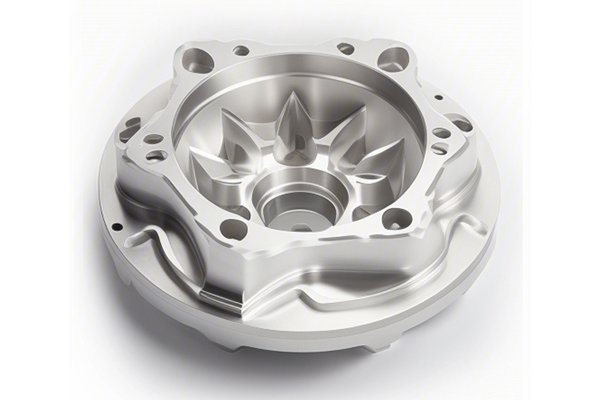Did you know that the global brass market is projected to reach approximately $16.6 billion by 2025? This rapid growth underscores brass’s importance in various industrial applications. Brass machining, in particular, has become a cornerstone of manufacturing processes, offering remarkable advantages for both small-scale operations and large industrial manufacturers. In this blog, we will explore everything you need to know about brass machining for industrial applications, delving into the processes involved, the advantages it provides, and practical solutions to common issues faced in brass machining.
Understanding Brass and Its Properties
What Is Brass?
Brass is an alloy composed primarily of copper and zinc, and it is known for its durability, corrosion resistance, and aesthetic appeal. The proportions of copper to zinc can be adjusted to produce different types of brass with varying mechanical properties, which makes it a versatile choice for numerous applications.
Properties of Brass
Brass Machining Processes
Turning is a machining process that involves rotating the brass workpiece against a cutting tool to create various geometries. This process is commonly used for producing cylindrical components like shafts and fittings.
Milling involves the use of rotary cutters to remove material from a workpiece, creating flat or contoured surfaces. Brass milling is employed for parts like brackets and mounts.
Grinding utilizes an abrasive wheel to achieve precise dimensions and finishes. This process is essential for achieving tight tolerances in brass components.
Drilling involves creating holes in brass workpieces, which is fundamental for assembly and fitting parts together. Specialized drill bits are used to ensure clean and accurate holes.
The Advantages of Brass Machining
One of the standout benefits of brass machining is its ability to produce high-precision components. Advanced machining techniques can achieve tolerances as tight as ±0.0001 inches. This level of precision is crucial for industries such as aerospace, automotive, and electronics, where even minor deviations can result in system failures.
Brass machining supports the creation of intricate designs that would be difficult to achieve with other materials. From decorative applications like musical instruments and jewelry to functional components such as valves and gears, brass can be machined into various shapes and sizes.
Brass lends itself to obtaining a superior finish quality due to its low friction properties. Parts machined from brass often boast a smooth, shiny appearance that requires minimal additional finishing processes.
While the initial cost of brass may be higher than some other metals, the durability and longevity of brass components lead to reduced maintenance and replacement costs over time. The precision of brass machining also minimizes material waste, contributing to overall cost efficiency.
Brass is a recyclable material. As industries move toward more sustainable practices, using brass can help reduce environmental impact through recycling and reducing waste in production.
Common Challenges in Brass Machining and Their Solutions

Challenge: Brass machining involves significant wear on cutting tools, which can impede production efficiency.
Solution: Employ high-speed steel (HSS) or carbide tools, which are designed to withstand high temperatures and maintain their cutting edges longer. Regular tool inspections and rotations can also help reduce wear rates.
Challenge: Brass produces short, stringy chips during machining, which can cause entanglement and disrupt the machining process.
Solution: Optimize cutting speeds and feed rates to produce more manageable chips. Additionally, using chip breakers on tools can enhance chip control.
Challenge: Excessive heat generated during machining can lead to undesirable changes in the material properties of brass.
Solution: Integrating coolant systems can effectively control temperatures during machining. Use cutting fluids specifically formulated for brass to improve performance.
Challenge: Swarf (metal shavings) can accumulate around the machining area, potentially causing hazards and obstructions.
Solution: Implement automated swarf removal systems and ensure that work areas are regularly cleaned to maintain a safe working environment.
Applications of Brass Machining in Various Industries
Brass is utilized for producing precision-engineered parts such as fittings, connectors, and gears in aircraft systems. The lightweight and corrosion-resistant properties of brass make it ideal for demanding aerospace applications.
Brass machining plays a vital role in manufacturing components like radiator cores, valve bodies, and electrical connectors, contributing to the overall efficiency and safety of vehicles.
Electronics rely heavily on brass for connectors, housings, and circuit components, given its excellent electrical conductivity and resistance to corrosion.
Brass is a common material in plumbing fixtures and HVAC systems due to its resistance to corrosion and ability to withstand high temperatures, making it a favorable choice for plumbing valves, fittings, and gauges.
Future Trends in Brass Machining
As technology advances, brass machining is expected to evolve and adapt to new trends:
In conclusion, brass machining for industrial applications presents myriad advantages that can significantly impact manufacturing processes’ efficiency, cost-effectiveness, and sustainability. From its exceptional properties to the precision and versatility it offers, brass remains a top choice for various applications across multiple industries.
By understanding the benefits, challenges, and solutions associated with brass machining, industries can leverage the unique properties of brass to enhance their production capabilities. As we move toward more automated and sustainable practices, the role of brass machining is set to grow even further.
Understanding brass machining is crucial for industries seeking to innovate and improve their manufacturing processes. Whether you are a manufacturer, engineer, or business owner, considering the benefits of brass machining can lead to strategic advantages in today’s competitive landscape. This is not just a discussion of materials but a discussion of optimization, efficiency, and excellence in manufacturing.
As you reflect on this information, think about how leveraging brass machining can transform your approach to production and help you stay ahead in an ever-evolving industrial environment.






